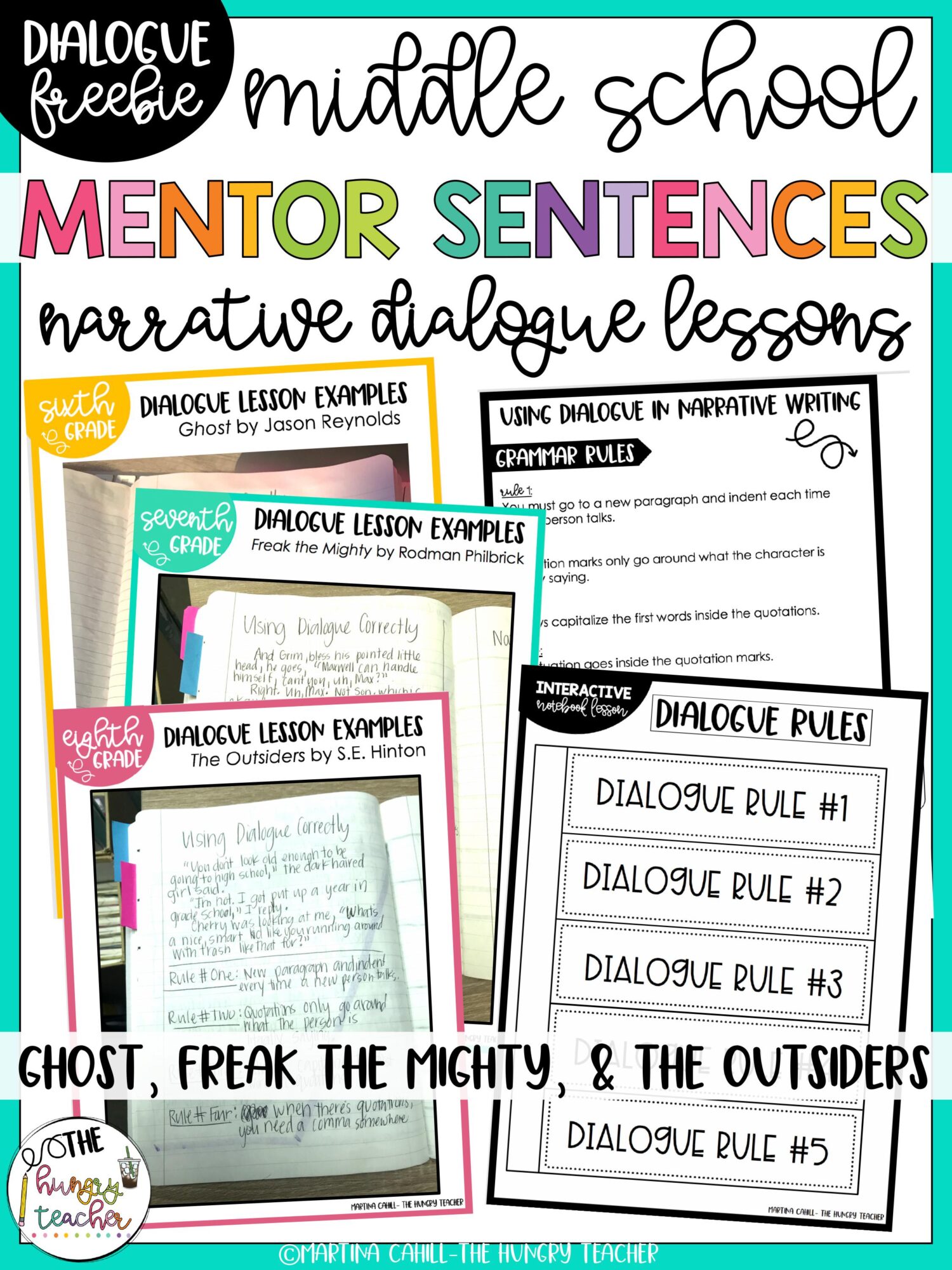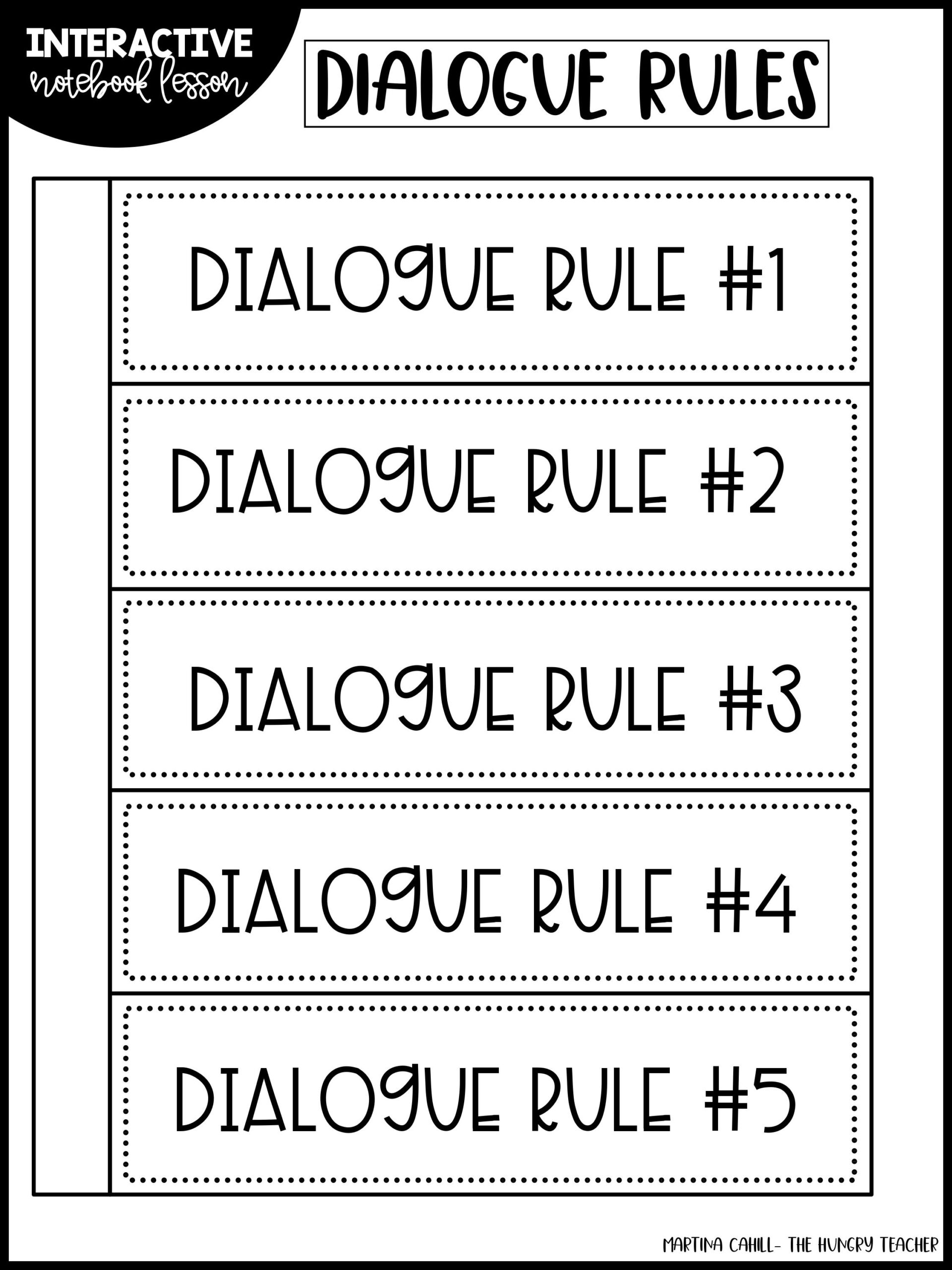hey friend!
I'm Martina.
I provide practical, time-saving strategies that actually work—so you can engage your students, teach effectively, and reclaim your time from the exhausting planning-grading cycle.
Browse Our ELA Resources
Middle School Mentor Sentences Narrative Essay Dialogue Freebie
We have been working on writing our narrative essays in my seventh and eighth grade middle school ELA classes, and in the process, I have created some new lessons and resources specifically to help students use dialogue correctly and effectively.
I used to get blue in the face over teaching my middle school students how to correctly use and format dialogue. I felt like I could get them to use it either effectively or correctly, but not always both. Since then, I created a resource that would teach students how to do both.
I wanted to make sure that the students formed a conceptual understanding of all of our narrative dialogue concepts.
When I created this lesson, I knew that using mentor sentences from our realistic fiction narrative novels would be perfect.
I was already reading these books aloud with my students, so I used them for all the examples.
NARRATIVE DIALOGUE MENTOR TEXT EXAMPLES
This freebie lesson is different than my other mentor sentence lessons. I needed to show my sixth, seventh, and eighth graders how to correctly format dialogue when we were writing and typing our narrative essays.
The focus wasn’t on labeling the parts of speech. It was more important that we notice how to format when multiple people were talking back and forth. This required us looking at multiple sentences, specifically sentences that had a variety of formatting for dialogue in terms of punctuation and capitalization.
We simply copied the sentences straight from the books into our notebook. Then as a class we came up with the rules for narrative essay dialogue, based on what we noticed.
When I made this when I only taught seventh and eighth grade so my examples only covered that, but I have since added an example for sixth grade with the mentor text Ghost by Jason Reynolds.
NARRATIVE DIALOGUE RULES AND STRATEGIES
I added the rules in my notebook and then eventually made a chart paper example with the narrative essay dialogue rules (also included).
There is an example for Ghost, Freak the Mighty and an example for The Outsiders, because I read those two books with 6th, 7th, and 8th respectively.
The rules we came up with for dialogue are as follows:
- ONE: You must go to a new paragraph and indent each time a new person talks.
- TWO: Quotation marks only go around what the character is literally saying.
- THREE: Always capitalize the first word inside the quotations.
- FOUR: Punctuation goes inside the quotation marks.
- FIVE:When there are quotation marks, you most likely need a comma somewhere (either at the end of the words in quotations or before when the speaker is being introduced: He said, … “
I also made a dialogue rules interactive notebook lesson that we used to create and write our class created rules.
I liked how every class had a little bit different rules. It showed that they were really conceptualizing their own knowledge about dialogue.
They genuinely grew so much as writers in their essays because of this lesson. I still had to support some students, but it seriously saved my sanity to not have to show them over and over again.
NARRATIVE ESSAY WRITING UNIT
This lesson was made to accompany my middle school narrative essay unit. Because I taught sixth, seventh, and eighth grade ELA, all my units are differentiated by middle school grade level. I needed to be able to use the same unit all three years, but not bore them to death.
This narrative writing unit has undergone huge improvements since it’s initial conception about five years ago. It went from a 60-70 page units to 150+ pages and has basically doubled in size.
Again, this unit is perfect if you teach multiple grades because you can teach it 2-3 years in row.
Want ALL the narrative essay freebies? Get the narrative reference booklet and the free narrative dialogue lesson plan, interactive notebook lesson, and more sent straight to your inbox!
Want a sneak peek at teaching The Hungry Teacher way—with support, structure, and strategy?
When you join the waitlist for The Hungry Teacher’s Hub membership, you get three free classroom-ready resources: a theme unit, an expository writing unit, and a grammar unit introducing mentor sentences. Plus, you’ll get immediate access to a selection of exclusives from the Hub, including editable sub plans, pacing guides, and more.
No strings attached. Just resources you can use right now—and a heads-up when the Hub opens.
3 Free Middle School ELA Units—yours to keep!
JOIN THE WAITLIST + A FREE GIFT
Where to next, line leader?
Welcome to The Hungry Teacher! We create resources that are easy to use, practical, and get results. Teach with confidence—and make it home before dinner.
xo, the hungry teacher





